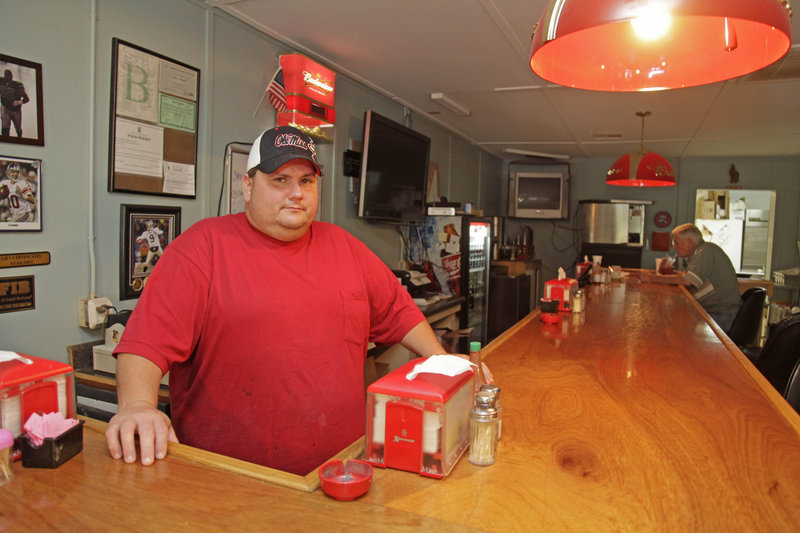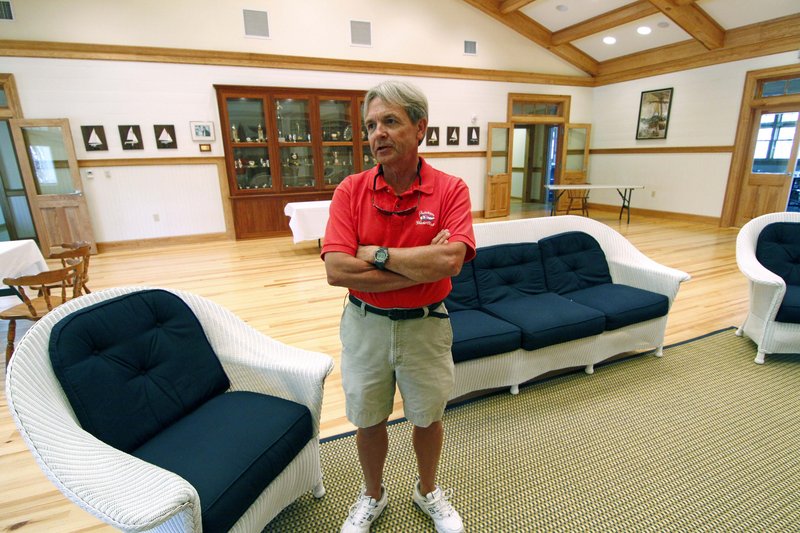CHALMETTE, La. – Five years after Hurricane Katrina, Jay Young is still haunted by the desperate voices on the other end of the telephone crying and begging for help.
As a loan officer for a federal agency that was supposed to help homeowners and businesses get back on their feet, he recalls how he was forced to turn away many qualified applicants because of what he says was pressure from his supervisors to close files quickly.
Karen Bazile remembers having high hopes, too, when she applied for a loan from the same agency, the Small Business Administration, to rebuild her home in the New Orleans suburb of Chalmette. While she ultimately got the money, she quickly lost faith as she struggled with different loan officers who misplaced her paperwork and told her she had only 48 hours to find and fax critical documents or her application would be canceled.
Some 160 miles to the east, in Alabama, Erik Schmitz, former commodore of the Fairhope Yacht Club, takes in a breathtaking view of Mobile Bay from a posh new clubhouse rebuilt in part with a $1.5 million disaster loan, the maximum from the SBA. For Schmitz, the entire loan process was smooth sailing.
While stories of the Federal Emergency Management Agency’s contaminated trailers and the Army Corps of Engineers’ inability to shore up the levees captured the headlines in the aftermath of the deadly storms of 2005, the bungling of the SBA, the lead federal agency helping people rebuild their homes and businesses, has largely been untold.
The sagas of Schmitz, Bazile and the SBA’s Young, who worked out of the agency’s massive loan processing center in Fort Worth, Texas, collectively reveal how the SBA failed in so many ways, an ominous experience as the agency prepares to play a similar role in the aftermath of the massive BP PLC oil spill.
These are stories of a mismanaged bureaucracy that still hurt half a decade later: tales of applications for low-interest disaster loans that should have been approved but were not, of applications deleted from the SBA computer system for no valid reason, of impossible-to-meet deadlines manufactured to clear backlogs, and of a process so chaotic and painful that thousands simply gave up.
An Associated Press investigation based on more than 200 interviews, thousands of pages of public documents obtained under the federal Freedom of Information Act and a first-ever detailed computer analysis of SBA data from hurricanes Katrina and Rita found that:
• Despite the obvious need, 55 percent of homeowners and businesses that applied for help after the hurricanes were turned away. According to data provided by SBA, of 318,953 applications processed, 175,463 were rejected and 143,490 were approved.
• Only 60 percent of the loan money approved by SBA ultimately reached applicants. Over the years, SBA officials have told congressional committees that the agency had approved more than $10 billion in loans, touting it as an example of how SBA had helped those on the Gulf Coast.
However, according to the data, only $6.1 billion of the approved loan money has been dispensed.
SBA officials say many applicants never accepted the loans because they found other ways to rebuild, including using insurance money. But many former applicants said in interviews that they just walked away because the entire process took too long and was too complicated.
• Of the money SBA did distribute, $357 million — nearly 6 percent — has never been repaid. More than a dozen people whose loans were charged off told the AP that the agency hasn’t contacted them about repayment.
• Country clubs, yacht clubs, exclusive private schools and megachurches received millions in loans from the agency founded in 1953 with a mission to “aid, counsel, assist and protect the interests of small business concerns.” Some of the more substantial operations rebuilt bigger and better, often contradicting SBA rules that say damaged buildings should be repaired only to their original state.
• Homeowners and businesses in higher-income areas were more likely to get a loan than those in lower-income areas, according to AP’s analysis of SBA data by ZIP code. “The truth is that only the wealthy moved through the system easily,” said Gale Martin, another former SBA loan officer. “If you were of a certain income, we funded you first, which is not the way the system is supposed to work.”
Martin contended that contrary to the SBA mission to especially help people who didn’t always have the means to rebuild, applicants with higher credit scores and bigger incomes were cherry-picked for processing first because those files could be closed quicker.
• A disparity also existed along racial lines. For example, the predominantly white, wealthier Lakeview section of New Orleans had the city’s highest ratio of approvals to rejections, while the lowest approval rates were in poorer, mostly black areas like the Lower Ninth Ward.
But a racial disparity was clear even among economically similar areas. SBA approved nearly 66 percent of loan applications in a predominantly white part of suburban St. Bernard Parish but approved only 42.1 percent in a predominantly black, adjacent section of eastern New Orleans with comparable median household income.
SBA officials said they don’t collect information about race on loan applications, but try to reach out to applicants in poor neighborhoods. Civil rights leaders say the agency hasn’t done enough to help.
SBA officials insist the agency today is better prepared to handle a major disaster.
“We’re not proud of what happened during the 2005 Gulf Coast hurricanes,” said James Rivera, deputy associate administrator of SBA’s office of disaster assistance. “Our response was slow, but we’ve learned from our mistakes.”
During the past five years, agency officials say, they have added staff, improved technology and simplified the loan process to push money out quickly to disaster victims.
But recent reports by government watchdog groups and some critics have slammed SBA for being too slow to implement measures that could improve an agency with a troubled past.
Congressional investigators and SBA whistleblowers question whether the agency is any better equipped for a major disaster today, as the region grapples with the oil-spill related assault on three pillars of its economy — seafood, tourism and offshore drilling.
CHAOS AT SBA
Images of New Orleanians trapped inside the Superdome without food and water, or desperately waiting on rooftops for help, haunted Americans in September 2005.
Meanwhile, a different kind of chaos unfolded inside the SBA.
A new computer system that was supposed to speed and simplify the loan process crashed time and again, resulting in massive delays. But that wasn’t the only problem.
“There were lots of people sitting around not doing anything with thousands of applications pouring in everyday,” said Brad Durtschi, a former SBA loan officer who now works for FEMA.
When Katrina hit, followed by Rita about three weeks later, SBA had only 880 employees to process hundreds of thousands of loan applications, including 190 loan officers working at the Fort Worth center.
SBA scrambled to hire several thousand additional staffers. The new loan officers — many from the private sector, with no loan processing experience — were rushed into service and expected to navigate a complex set of rules and regulations.
The loan applications piled up.
SYSTEM GRIDLOCKS
December 2005, the system was gridlocked. Hundreds of thousands of applications were sitting in computer queues awaiting processing.
With congressional pressure mounting to turn loans around more quickly, the agency began using new methods to clear the backlog that had little to do with helping people get loans, former loan officers and supervisors told the AP.
Supervisors would reject applications if a single sheet of paper or signature was out of place. Loan officers were required to process up to twice as many applications per day. When one landed on their desk, a loan officer had to try three times within 24 hours to reach the potential borrower by telephone. If they didn’t, the loan was either declined or indefinitely shelved.
If shelved, the loan application was effectively canceled and a letter was generated saying the applicant had 60 days to reapply. Supervisors often conducted contests with cash prizes to reward loan officers who cleared the most applications, usually by rejecting as many as possible. One supervisor told the AP she won $100 for exceeding production quotas.
“I would hear loan officers laughing about the loans they turned down,” Young said.SBA’s Rivera questioned whether supervisors pushed loans through without review.
“Obviously when you have 4,250 employees, you’re going to have some disgruntled employees,” he said.
He said loan officers had to meet strict production quotas in line with the private sector. If they didn’t, they could be let go.
Send questions/comments to the editors.




Success. Please wait for the page to reload. If the page does not reload within 5 seconds, please refresh the page.
Enter your email and password to access comments.
Hi, to comment on stories you must . This profile is in addition to your subscription and website login.
Already have a commenting profile? .
Invalid username/password.
Please check your email to confirm and complete your registration.
Only subscribers are eligible to post comments. Please subscribe or login first for digital access. Here’s why.
Use the form below to reset your password. When you've submitted your account email, we will send an email with a reset code.